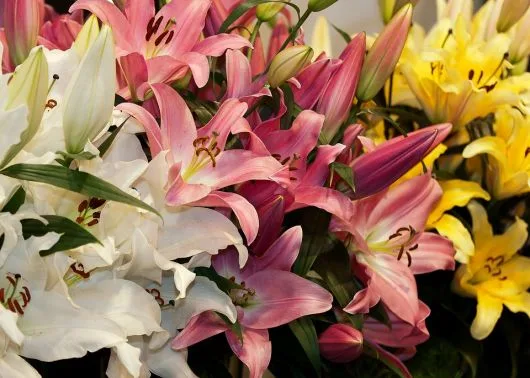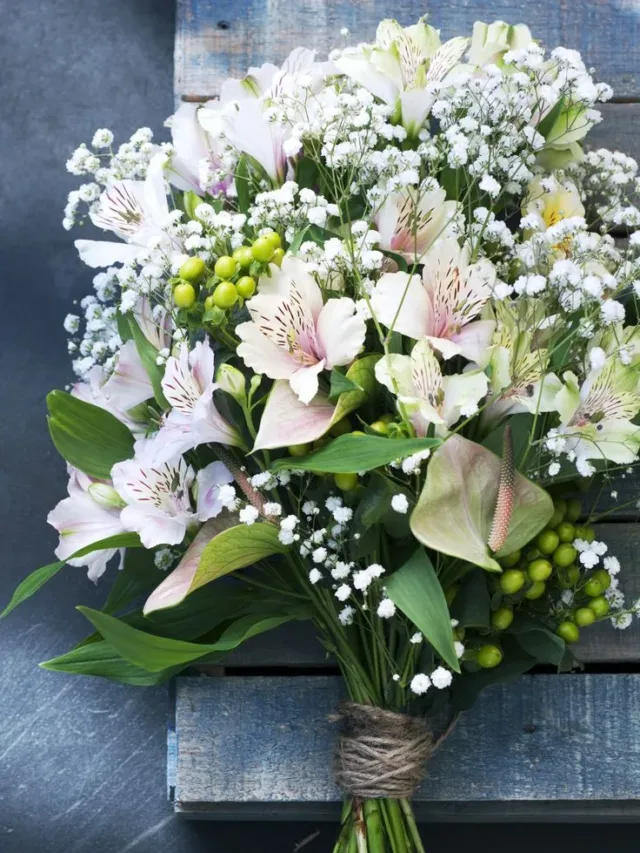Index
Introduction
Lilies, with their majestic beauty and delicate scent, have been symbols loaded with meaning in various cultures around the world. Their presence in gardens and art has a long history, and the symbolism associated with these multifaceted flowers transcends generations. From ancient Egypt to classical Greece and beyond, the lily has represented a variety of ideas and concepts that echo through the ages. In this article, we delve into the rich and deep symbolic tradition of lilies to unravel their multifaceted meanings and discover what they represent in different cultural contexts.
Lilies, with their delicate petals and vibrant colors, are often associated with purity, renewal and hope. In many traditions, they symbolize spiritual renewal, rebirth and transcendence. In addition, these flowers have been used in religious rituals and are considered sacred in various spiritual practices. In this context, the lily transcends its physical form and becomes a powerful emblem of spiritual and moral values, carrying with it a message of beauty, purity and spirituality. By exploring the meaning of the lily flower, you can better understand how this unique flower is intertwined with human history and plays a significant role in the global cultural landscape.
Meaning of the Lily
The lily, with its elegance and exuberant beauty, is a flower that transcends cultures and times, with a deep and universal meaning. It is often associated with concepts of purity, renewal and transition. Its presence in gardens and floral arrangements symbolizes not only aesthetic beauty, but also the idea of renewal and resurrection. As one of the oldest flowers in human history, the lily represents the essence of life, love and hope , serving as a constant reminder of the beauty that resides in nature and in the human spirit.

Spiritual Meaning of the Lily
In addition to its general significance, the lily has played a crucial role in various spiritual practices and religious symbolism in many parts of the world. Many traditions attribute a deep spiritual connotation to the lily, representing spiritual purity, transcendence and enlightenment. In certain cultures, the lily is considered a symbol of divinity, representing the connection between the material world and the divine. Its graceful shape and immaculate white petals have inspired humanity to seek inner purity and spiritual transcendence.
Meaning of Each Color
Lilies, with their variety of dazzling colors, have different meanings associated with each one, conveying a range of emotions and symbolisms that enrich their presence in different cultural and emotional contexts.
- White: The white lily symbolizes purity and virtue, representing innocence and peace. It is often associated with the idea of spiritual transcendence and the search for inner purity. Its immaculate elegance evokes a sense of grace and simplicity.
- Yellow: The yellow lily represents joy, optimism and vitality. It is a color that radiates energy and happiness, symbolizing sunlight and positivity. The yellow lily is often associated with friendship and good luck, conveying a feeling of warmth and enthusiasm.
- Pink: The pink lily symbolizes admiration, gratitude and appreciation. This color conveys a feeling of affection, kindness and tenderness. The pink lily is often associated with femininity and delicacy, conveying a message of affection and gratitude.
- Orange: The orange lily represents enthusiasm, fervor and creativity. This color conveys a sense of vitality and determination, symbolizing energy and passion for life. The orange lily is often associated with enthusiasm and boldness, conveying a feeling of joy and vivacity.
- Red: The red lily symbolizes love, passion and burning desire. This color conveys a feeling of intense emotion and ardor, representing deep love and passionate devotion. The red lily is often associated with the expression of ardent feelings and the intensity of emotion.

Who to Gift the Lily to
Friends and family
Lilies are ideal gifts for friends and family, conveying a message of warmth, affection and appreciation. They are perfect for celebrating special moments, such as birthdays, graduations and important achievements, symbolizing wishes of happiness and success.
Special events
Lilies also make lovely gifts for special events, such as weddings, wedding anniversaries and engagement parties. Their elegance and symbolic meaning make them a popular choice for expressing vows of lasting love, purity and unity.
Expressing condolences
In addition, lilies can be a compassionate expression of condolence in times of mourning and loss. Their presence conveys a message of sympathy, peace and hope, offering comfort and emotional support to loved ones in difficult times.
Work colleagues
Lilies can also be a suitable option for giving to work colleagues on occasions such as promotions, farewells and thank yous. They represent respect, admiration and good wishes for future success, strengthening professional ties and conveying a message of collaboration and camaraderie.
Curiosities and myths
Lilies, in addition to their deep symbolic meanings, have a rich history full of curiosities and myths that contribute to the enduring fascination surrounding these magnificent flowers.
- Ancient origins: Lilies have a long history dating back to antiquity. They have been a constant presence in myths, legends and works of art over the centuries, being revered in various cultures for their beauty and symbolic significance.
- Associated with divinity: In many cultures, the lily has been associated with deities and mythological figures. In Greek mythology, for example, the lily was linked to the goddess Hera, symbolizing purity and femininity. These mythological connections have contributed to the continued sacralization and reverence of these flowers throughout history.
- Variety of species: Lilies cover a wide range of species, each with its own unique characteristics. From the majestic Royal Lily to the delicate Lily of the Valley, these flowers present a remarkable diversity, attracting the attention of gardening enthusiasts and nature lovers all over the world.
- Presence in art and culture: Lilies have often been depicted in works of art, literature and music. Their presence in floral art and decoration has been a source of inspiration for artists over the centuries, reflecting their timeless beauty and aesthetic appeal.
- Symbolism in wedding traditions: Lilies have played an important role in many wedding traditions, symbolizing purity, love and lasting commitment. They are often included in bridal bouquets and floral arrangements, adding a touch of elegance and special meaning to wedding celebrations.

Conclusion
In summary, the lily transcends its existence as a simple flower, representing a powerful symbol of purity, transcendence and spiritual renewal. Over the centuries, this magnificent flower has left its mark on art, culture and mythology, consolidating itself as an icon of timeless beauty and profound symbolic meaning. Whether in Greek mythology associated with the goddess Hera or in contemporary weddings, the lily continues to captivate people’s hearts, conveying a message of hope, love and harmony.
By exploring the multifaceted meaning of each color and uncovering the myths and curiosities surrounding this splendid flower, it is clear that the lily continues to be an inexhaustible source of inspiration and fascination for humanity. Its presence in gardens, celebrations and artistic expressions continues to reinforce the importance of the connection between nature and the human spirit, constantly reminding us of the beauty that lies in simplicity and purity. Therefore, the lily is not just a flower, but a timeless emblem of hope, beauty and spiritual significance that echoes through the ages.








